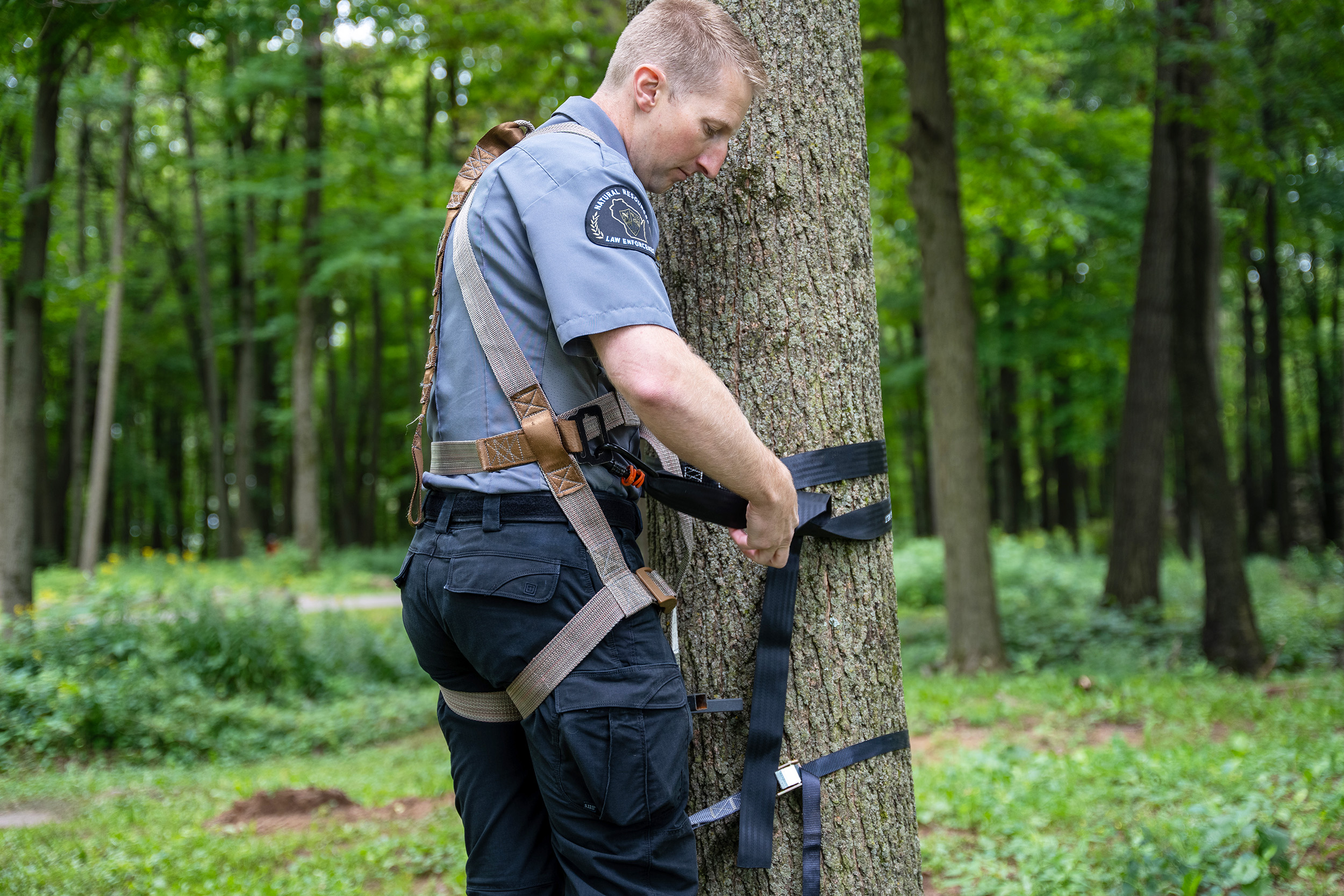Avoid Tree Stand Tragedies
Safety Tips for Hunters
9/4/2024

Joseph Mulrooney, Recreation Warden with the Wisconsin DNR
Tree stand accidents
are a leading cause of hunting-related injuries, with 300-500 fatalities
annually in the U.S., according to the International Hunter Education
Association. As Archery and Crossbow Deer Hunting Season begins this fall in Wisconsin, Minnesota, and Michigan,
prioritizing safety is essential.
“You’re much more
likely to get injured from a fall than a gunshot wound,” warns Michael
Clark, MD, MPH, EMS Medical Director with Aspirus MedEvac. “It’s a concern
that we should definitely take precautions to avoid.”
Falls from tree
stands can lead to severe injuries, including fractures and potentially
life-threatening conditions. Dr. Clark explains that "many of these
injuries are orthopedic, including wrist, ankle, and femur fractures,"
while also emphasizing the risk of head, neck, chest and abdominal injuries. He
adds, “The higher up you go, the more likely you are to sustain a significant
injury.” Falls from heights over 10 feet, which is common with most tree
stands, tend to result in more severe injuries.
To ensure a safe
hunting experience, Dr. Clark and Joseph Mulrooney, a Recreation Warden with
the Wisconsin Department of Natural Resources (WDNR), provide the following tree
stand safety and emergency preparedness tips:
Safe Tree Stand
Practices
- Stay Connected:
“Every year we have dozens of people falling out of trees, which is why we
highly recommend staying connected to the tree with a tree strap,” says
Mulrooney. A tree strap will provide stability while climbing to prevent falls.
- Wear Safety
Harnesses: Wearing a safety harness is critical when using a tree stand.
According to Mulrooney, “Not wearing a safety harness is one of the most common
reasons we see people falling out of tree stands.”
- Inspect Gear:
Inspect your tree stands and related equipment before the season for any wear
or damage. “I highly recommend people go out in August or September to make
sure your straps are in good shape,” says Mulrooney, noting that straps can
develop tears or bites from rodents in the off-season. “Straps are cheap. A
broken leg isn’t.”
- Use Haul Lines:
Avoid carrying gear while climbing. Instead, use haul lines to lift your
equipment safely.
- Know Your Location:
Using a GPS app can provide precise coordinates if needed in an emergency.
Emergency
Preparedness
- Develop a Safety
Plan: “Make sure your family knows where you are and when you plan to be back
so if something were to happen and you don’t return, they know where to look
for you,” suggests Dr. Clark, stressing the importance of having a clear safety
plan before heading out to hunt.
- Prepare for
Communication: Keep your cell phone fully charged and be familiar with key
landmarks. If you need to signal for help with poor cell service, Clark adds,
“Many times a text message can go through when a regular phone call can’t.”
Text someone and have them make the 911 call for you.
- Bring a First Aid
Kit: Equip yourself with a comprehensive first aid kit, including essentials
like a tourniquet and wound-packing materials.
- Assess Your
Situation: If you find yourself injured and alone, Dr. Clark advises performing
“a quick head-to-toe assessment of yourself.” Understanding the severity of
your injuries can help you communicate your condition effectively to rescuers.
- Stay in Place: In
the event of an injury, remaining in place may be your safest option. Conserve
energy and avoid worsening your condition while waiting for help to arrive.
By following these
safety guidelines and expert recommendations, hunters can significantly reduce
the risk of injury and ensure a safe hunting season. For more tips and
resources, visit your state's Department of Natural Resources website.

Back to all Posts